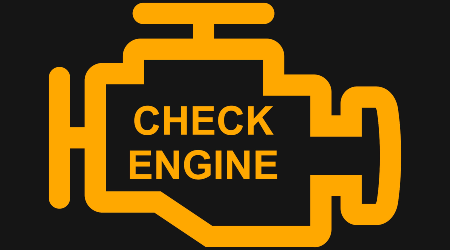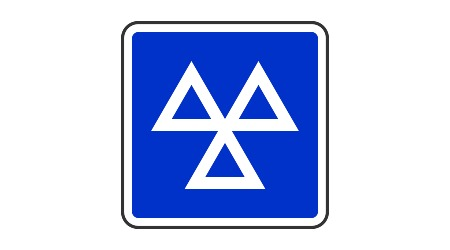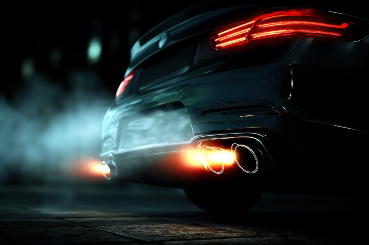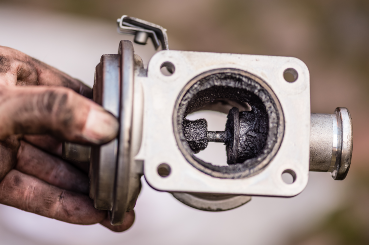Chances are that your engine management light has come on in your car on at least one occasion. If you’ve found that your initial reaction is one of panic, you’re not alone. Many people immediately worry if their engine warning light comes on.
More often than not, though, there’s probably no need to be overly concerned. There’s nearly always a straightforward explanation for why your “check engine” light has come on. Later we’ll have a look at what can cause your engine management light to become illuminated, but first, let’s look at what it is.
What does the Engine Management Light mean?

The engine management light (EML), also known as the “check engine” light, is linked directly to the engine control unit (ECU).
This lets you know if your engine performance has become impaired in any way by a number of factors.
Your car has lots of sensors all around it monitoring various levels and, if one sensor notes a problem, it will relay that issue to the ECU.
In response, it will illuminate the engine management light in a specific colour to let you know that you should have your car checked by a garage.
Is it safe to drive with the Engine Management Light on?
The EML will be illuminated in different colours, each depending on how severe the issue is. A yellow, amber or orange engine management light is the most common and is usually advisory, letting you know that there’s a potential issue with the engine performance. You are safe to continue driving your car, although you may notice reduced performance, but you should look to have your car checked at the earliest opportunity by your local garage.
A flashing engine management light is usually also amber and, again, lets you know that there’s a potential issue with your car that you should have looked at as soon as possible. It’s safe to continue driving so you can continue your journey and book your car into your local garage as soon as you can.
A red engine warning light tells you that you have a potentially serious problem, possibly a complete failure of one or more things that can result in damage to your engine if you continue to drive. You should stop the car and call your garage immediately to have the car recovered and checked as soon as possible.
What to do when the “Check Engine” Light comes on?

As you can see, there are a variety of reasons why the “check engine” light becomes illuminated and not all of them are potentially serious.
Fortunately, the colour of the light usually gives you an idea of the severity of the problem, so you should automatically know that a yellow/orange/amber light tells you that it is safe to continue driving.
However, a red light indicates a much more serious issue that requires immediate attention before you travel any further.
Why is my Engine Management Light on?
There are a number of reasons why your engine management light has become illuminated, but here are some of the most common causes, in no particular order.
1. Oxygen Sensor malfunction (emissions issue)
One of the many sensors monitored by the ECU, the oxygen sensor measures the amount of oxygen that goes unburned in the car’s exhaust system. A failed O² sensor will cause more fuel to be burned than is necessary. This, in turn, will dramatically lower the car’s fuel efficiency. You can still drive your car with a malfunctioning oxygen sensor, but your MPG figures will suffer until the issue is fixed.
2. Loose or faulty petrol filler cap
An illuminated EML doesn’t always highlight a major problem, sometimes it can be as simple as your petrol filler cap being loose. It’s easier than you think to fill the car up at the petrol station and drive away having not properly tightened the filler cap. An improperly fitted cap can play havoc with your car’s fuel economy and emissions levels, as it allows fuel hydrocarbons to leak out and pressure to be lost.
If your “check engine” light comes on, it may be worth quickly pulling over and making sure your filler cap is properly tightened. At the same time, you can have a look for any cracks or damage to the cap. A new filler cap is inexpensive and may fix your problems.
3. Catalytic Converter issues
Your car’s catalytic converter turns harmful carbon monoxide into carbon dioxide. If you keep your car regularly serviced, it shouldn’t fail completely. More often than not, issues with the catalytic converter are symptoms of another part failing, such as the oxygen sensor or Exhaust Gas Recirculation valve. However, the catalytic converter itself can become clogged if you only ever drive short journeys.
To help it remain clean and efficient, it may be worthwhile to occasionally take your car on the motorway. If it does fail, your emissions levels will increase, causing the engine management light to illuminate.
4. Mass Airflow Sensor malfunction
The mass airflow sensor’s job is to tell your car’s ECU how much fuel to add into the engine’s combustion chamber to match the amount of air flowing into the engine. These levels ensure that the car runs as efficiently as possible.
A potential failure of the sensor will cause your car’s fuel economy to increase and your engine to occasionally stall, as incorrect levels of fuel are being delivered into the combustion chamber. As the mass airflow sensor sits behind the air filter in the car’s engine bay, faulty readings or a total failure of the sensor are often caused by issues with the air filter itself.
You should have your air filter replaced once every twelve months to ensure that it is fitted correctly and working properly.
5. Faulty spark plugs/wires/ignition system
Faulty spark plugs can cause your engine to misfire, lose power, and run less efficiently. They are responsible for igniting the air-fuel mixture, so any wear, damage, or fouling disrupts this process. As a result, your engine management light may come on to warn of the problem.
It’s not just the spark plugs; the ignition wires and coils that deliver the electrical charge can also fail over time. Damaged or corroded wires and weak ignition coils can prevent the spark plugs from firing properly. This can lead to rough idling, poor fuel economy, and increased emissions.
If left unchecked, ignition system faults can cause further engine damage, including harm to the catalytic converter. To avoid costly repairs, have your spark plugs and ignition components inspected regularly. Always follow your manufacturer’s maintenance schedule for replacements.
6. Malfunctioning DPF
The Diesel Particulate Filter is a part that’s fitted to the exhaust system of diesel cars. As exhaust gases pass through the exhaust system, the DPF removes any harmful particles. These particles build up over time to form a sooty deposit that can start to clog up, causing the DPF to underperform.
When this happens, the filter sends a signal to the ECU. In turn, the ECU tells the car’s engine to start the DPF regeneration process, whereby extra fuel is burned by the car in order to increase the temperature in the DPF and burn all the deposits, cleaning the DPF. If the DPF fails, it doesn’t send those signals to the ECU causing power to be reduced and emissions levels to increase, resulting in the “check engine” light coming on.
7. Vacuum hose leak
Your car’s engine contains numerous vacuum hoses that help to control a number of functions, one being the lowering of harmful emissions through the car’s exhaust system. Due to the fact that these hoses are constantly exposed to extreme temperatures, they can easily become cracked, causing the part to fail. In turn, this can cause a specific sensor to inform the ECU of a problem, resulting in the engine management warning light being lit up.
8. EGR valve failure
The Exhaust Gas Recirculation valve controls the amount of nitrogen oxide in the car’s engine, helping to improve its efficiency. It does this by redirecting a portion of the exhaust gases back through the engine’s cylinders, where they are used again in the combustion process. The EGR valve can become stuck open or closed due to a build-up of particles, which will cause a fault, resulting in the engine management light being illuminated on the dash.
9. Fuel Injector problems
The fuel injector moderates the amount of fuel that is delivered into your car engine’s combustion chamber. Occasionally they can become clogged, which causes them to underperform or fail entirely. They also rely on the information received by the ECU from other sensors around the car, so failures in other elements can have an effect. As soon as the fuel injector stops working efficiently, the ECU will illuminate the engine management light.
10. Fuel Pump problems
A failing of the fuel pump will cause incorrect amounts of fuel to be delivered, causing the ECU to report a fault and the “check engine” light to become illuminated. Once the fuel pump does start to fail, it is likely that total failure will follow shortly after. With that in mind, although you can continue to drive your car, you should have the car checked at your local garage as soon as possible.
How to reset the Engine Management Light
If your engine management light comes on, the simplest first step is to safely pull over and try restarting the car. In some cases, a quick restart can reset the system if the issue was a minor glitch. However, if the light stays on after restarting, the problem is likely still present and should be looked at by a professional.
Some drivers may attempt to reset the light using diagnostic tools or by disconnecting the battery, but this is not generally advised. Doing so might temporarily clear the warning, but it doesn’t address the root cause and risks masking a potentially serious fault.
For peace of mind and to avoid further damage, it’s always best to have a trusted garage inspect the vehicle properly. A trained mechanic can diagnose the issue accurately and reset the light once the fault has been fixed.
Is the Engine Management Light an MOT failure?

For most modern vehicles, an illuminated engine management light (EML) is classed as a major fault during an MOT test.
This is because the warning indicates a potential issue with the engine, emissions, or other critical systems, all of which are important for roadworthiness and environmental compliance.
As a result, if the EML is on when your car is tested, it will usually lead to an automatic MOT failure.
However, if you own an older or classic car, it may not be subject to the same checks. Some vehicles built before dashboard warning lights became standard might not be inspected for an EML at all.
If you’re unsure, it’s best to check with your MOT tester beforehand, but generally speaking, if your car is fitted with an EML, it must not be illuminated during the test to pass.
Our advice is as follows:
1. Note the colour of the light which will indicate the severity of the problem.
2. Listen to your car – is it making strange noises?
3. Does your car feel any different? Does it feel sluggish, or is failing to respond as it usually would?
4. If the engine management light isn’t red and you feel comfortable enough to continue your journey, you may do so but ensure that you book your car into your nearest Stoneacre garage at your earliest opportunity to be checked.
5. If the “check engine” light is red, do not attempt to drive any further. Call your breakdown service and have them recover your vehicle to your local garage.
If you have noticed that a light other than your engine management light has become illuminated on your dashboard, make sure you read Dashboard Warning Lights Explained and you’ll find advice on a number of warning lights.
If your warning light is indicating a problem, contact our service team on 01405 801801 today.




















